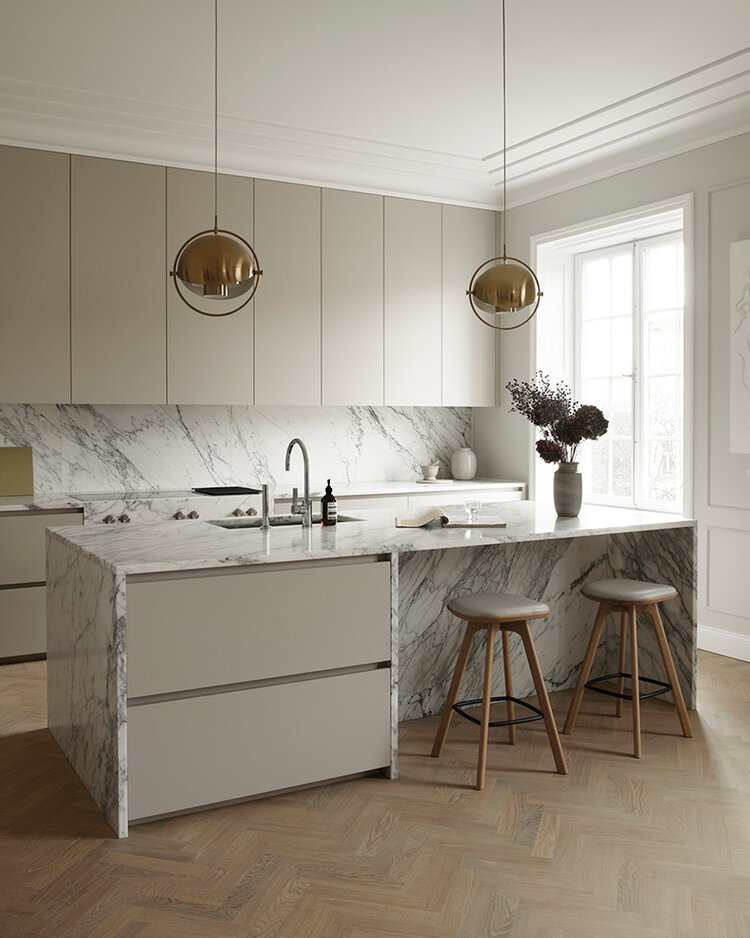The minimalist kitchen design is increasingly popular for its elegant simplicity, practicality, and ability to make any space feel more open and inviting. A minimalist kitchen focuses on clean lines, neutral colors, and clutter-free surfaces, making it both beautiful and highly functional. Whether you have a small apartment kitchen or a large open-plan space, adopting minimalist principles can transform your kitchen into a calm and efficient environment.
What is Minimalist Kitchen Design?
Minimalist kitchen design revolves around the concept of “less is more.” It strips away unnecessary decoration and excess, prioritizing only the essential elements for cooking and living. The style features smooth surfaces, simple geometric shapes, and integrated storage solutions that keep clutter out of sight. Minimalist kitchens also emphasize natural light, high-quality materials, and a neutral color palette that enhances the space’s openness.
Core Elements of a Minimalist Kitchen Design
Clean Lines and Simple Forms
Minimalist kitchens feature flat-panel cabinetry, sleek countertops, and streamlined appliances. The design avoids ornate details or decorative hardware, focusing on smooth, uninterrupted surfaces.
Neutral Color Palette
Whites, grays, beiges, and natural wood tones dominate minimalist kitchens. These colors reflect light and create a sense of spaciousness and calm. Accent colors are used sparingly to maintain a cohesive look.
Clutter-Free Surfaces
Countertops are kept clear except for a few essential items. Smart storage solutions hide appliances, utensils, and cookware, maintaining an organized environment.
Integrated Appliances
Refrigerators, dishwashers, and microwaves are often integrated behind cabinetry panels, maintaining a uniform look and eliminating visual distractions.
Quality Materials
Materials such as quartz, marble, stainless steel, and solid wood add texture and durability while maintaining minimalist aesthetics.
Efficient Lighting
Lighting is functional and understated, with recessed lights, pendant fixtures, and under-cabinet LEDs providing ample illumination without cluttering the design.
Minimalist Kitchen Design Ideas
Handleless Cabinets: Cabinets without knobs or handles create smooth, seamless surfaces.
Monochrome Schemes: Use matching colors for cabinetry, counters, and backsplashes to unify the space.
Minimal Decor: Keep decorative items to a minimum—choose a statement piece or fresh flowers.
Open Shelving: Use sparingly to display curated items, adding personality without clutter.
Multipurpose Islands: Incorporate kitchen islands with built-in storage and seating to maximize space.
Tips for Maintaining a Minimalist Kitchen
Declutter Regularly: Routinely remove items you don’t use.
Organize Smartly: Use drawer dividers, baskets, and pantry organizers.
Choose Versatile Appliances: Appliances with multiple functions reduce countertop clutter.
Keep Cleaning Supplies Handy: Maintain spotless surfaces effortlessly.
Benefits of Minimalist Kitchen Design
Timeless Elegance: Minimalist kitchens remain stylish and relevant.
Easy Maintenance: Smooth surfaces and less clutter simplify cleaning.
Enhanced Functionality: Efficient layouts improve cooking and workflow.
Calm Environment: A clutter-free space reduces stress and creates a welcoming atmosphere.
Final Thoughts
Designing a minimalist kitchen is about balancing form and function while embracing simplicity and order. Whether renovating or building new, a minimalist kitchen offers a timeless, efficient, and beautiful space where cooking and socializing become more enjoyable.

